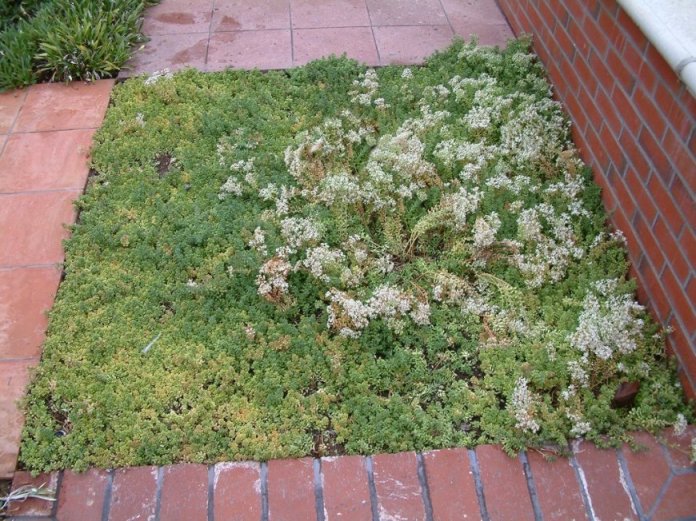| Botanical Name: Sedum spurium 'Album' | |
| Common Name: White Stonecrop |

-
Anatomy
-
Culture
-
Design
Plant Type
Ground cover, Perennial, Succulent
Height Range
Under 1'
Flower Color
White
Flower Season
Summer
Leaf Color
Green, Grey Green
Bark Color
n/a
Fruit Color
n/a
Fruit Season
n/a
Sun
Full
Water
Low
Growth Rate
Moderate
Soil Type
Sandy, Clay, Loam, Rocky, Unparticular
Soil Condition
Average, Rich, Poor, Well-drained, Dry
Soil pH
Neutral, Basic
Adverse Factors
Attracts Bees
Design Styles
English Cottage, Japanese, Mediterranean, Ranch, Spanish
Accenting Features
Fall Color, Showy Flowers, Unusual Foliage
Seasonal Interest
Spring, Summer, Fall
Location Uses
Entry, Perennial Border, Shrub Border, Foundation, Parking Strip, Patio, Raised Planter, Walkways
Special Uses
Container, Mass Planting, Small Spaces
Attracts Wildlife
Butterflies
Information by: Stephanie Duer
Photographer:
Photographer:
-
Description
-
Notes
This small, spreading stonecrop typically grows 3 to 6 inches high and spreads 10 to 18 inches, forming a dense mat of foliage. Creeping stems root at the nodes. Small, rounded, fleshy, succulent-like green leaves are covered by clusters of tiny white, star-like flowers in early summer. Use as a groundcover in a rock garden, along a path, at the edge of a sunny perennial border, or in the parkstrip.
As a group, sedums prefer well-drained soils, including sandy-loam, clay-loam, or rocky soils, as long as it is well drained. In nature, most sedums occur in light shade or partly sunny sites, while a few are also well-adapted to full sun situations. They can tolerate both drought conditions or more frequent watering, but the key is good drainage. Their xeric nature makes sedums popular for use in rock gardens, roof gardens, wall gardens, and living wreaths.